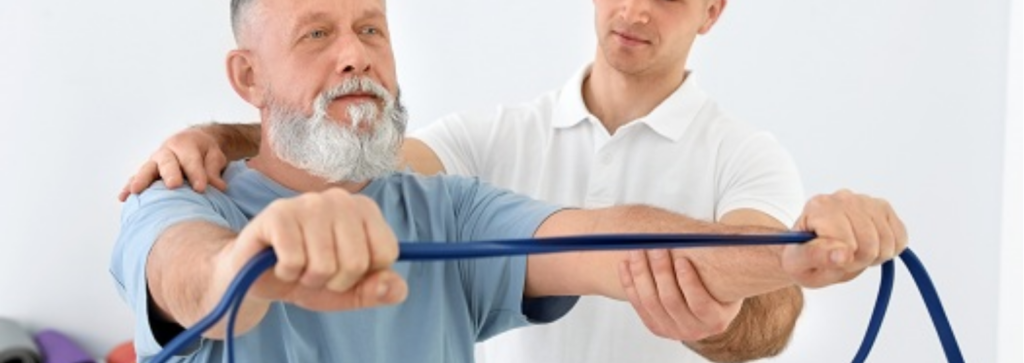A stroke can have a profound impact on an individual’s physical and cognitive abilities, often resulting in challenges with mobility, coordination, and daily activities. However, engaging in a structured exercise program is essential for recovery and rehabilitation. Exercises tailored for stroke survivors can help rebuild strength, enhance balance, and improve overall functional independence. These exercises are designed to accommodate various levels of recovery and can be adapted to meet individual needs and capabilities.

By incorporating regular physical activity into their rehabilitation journey, stroke survivors can foster neural plasticity, which aids in regaining lost functions and enhances their overall quality of life. This guide will explore effective exercises that empower stroke survivors to reclaim their independence and improve their physical well-being.
Here are the top five exercises that can be beneficial for stroke survivors, aimed at enhancing mobility, strength, balance, and coordination. Individuals need to consult with their healthcare providers or therapists before starting any exercise regimen.
Stroke Recovery Exercises
1. Seated Marching
Benefits: Improves leg strength, coordination, and cardiovascular fitness.
- How to Do It:
- Sit in a sturdy chair with feet flat on the floor.
- Lift one knee as high as comfortable, then lower it back down.
- Alternate legs, marching in place for 1-2 minutes.
2. Standing Heel Raises
Benefits: Enhances balance and strengthens calf muscles.
- How to Do It:
- Stand behind a chair or counter for support.
- Slowly rise on your toes, lifting your heels off the ground.
- Hold for a moment, then lower back down.
- Repeat 10-15 times.
3. Wall Push-Ups
Benefits: Builds upper body strength and improves stability.
- How to Do It:
- Stand a few feet away from a wall and place your hands on the wall at shoulder height.
- Lean in towards the wall by bending your elbows, then push back to the starting position.
- Repeat 10-15 times.
4. Arm Raises
Benefits: Strengthens shoulder and arm muscles, improving upper body mobility.
- How to Do It:
- Sit or stand with arms at your sides.
- Raise one arm overhead as far as comfortable, then lower it back down.
- Alternate arms, completing 10-15 repetitions on each side.
5. Side Leg Raises
Benefits: Improves hip strength, balance, and coordination.
- How to Do It:
- Stand behind a chair for support.
- Slowly lift one leg out to the side while keeping it straight.
- Lower the leg back down without touching the ground.
- Repeat 10-15 times on each leg.
Important Considerations
- Safety First: Ensure that the environment is safe and free from hazards. Use support when necessary, especially for balance.
- Warm-Up and Cool-Down: Always start with gentle warm-up exercises and finish with cool-down stretches to prevent injury.
- Listen to Your Body: If any exercise causes pain or discomfort, stop immediately and consult a healthcare professional.
- Consistency is Key: Aim to practice these exercises regularly, ideally several times a week, to maximize benefits.
These exercises can be adapted based on individual abilities and progress, making them suitable for various levels of recovery. Working with a physical or occupational therapist can help ensure exercises are performed correctly and safely.
Essential Exercises and Benefits for Stroke Recovery

Hand Grips
Benefits: Strengthens hand and forearm muscles, improving grip and fine motor skills.
- How to Do It:
- Use a soft stress ball or therapy putty.
- Squeeze the ball/putty and hold for a few seconds, then release.
- Repeat for 10-15 repetitions with each hand.
Chair Stands
Benefits: Builds leg strength and improves balance.
- How to Do It:
- Sit on the edge of a sturdy chair with feet flat on the floor.
- Lean forward slightly and stand up without using your hands, then sit back down.
- Repeat for 10-15 repetitions.
Balance Exercises
Benefits: Enhances stability and coordination.
- How to Do It:
- Stand behind a chair or near a wall for support.
- Lift one leg to the side and hold for a few seconds, then lower it back down.
- Alternate legs, repeating for 10-15 repetitions.
Neurorehabilitation for stroke
Neurorehabilitation for stroke focuses on restoring lost functions and enhancing independence through personalized therapy programs. It involves a multidisciplinary approach, including physical therapy, occupational therapy, and speech therapy, tailored to address individual impairments. Techniques promote neural plasticity, utilizing task-specific training and advanced technologies like robotics and virtual reality. Family and caregiver involvement is crucial for emotional support and practical assistance. Regular assessments monitor progress and adjust rehabilitation goals, empowering stroke survivors to reclaim their lives and improve their overall quality of life.
Therefore, incorporating exercises into the rehabilitation journey for stroke survivors is essential for enhancing mobility, strength, and overall quality of life. Tailored exercises not only promote physical recovery but also foster independence in daily activities. By embracing a consistent exercise routine, stroke survivors can significantly improve their functional abilities and regain confidence in their capabilities.



